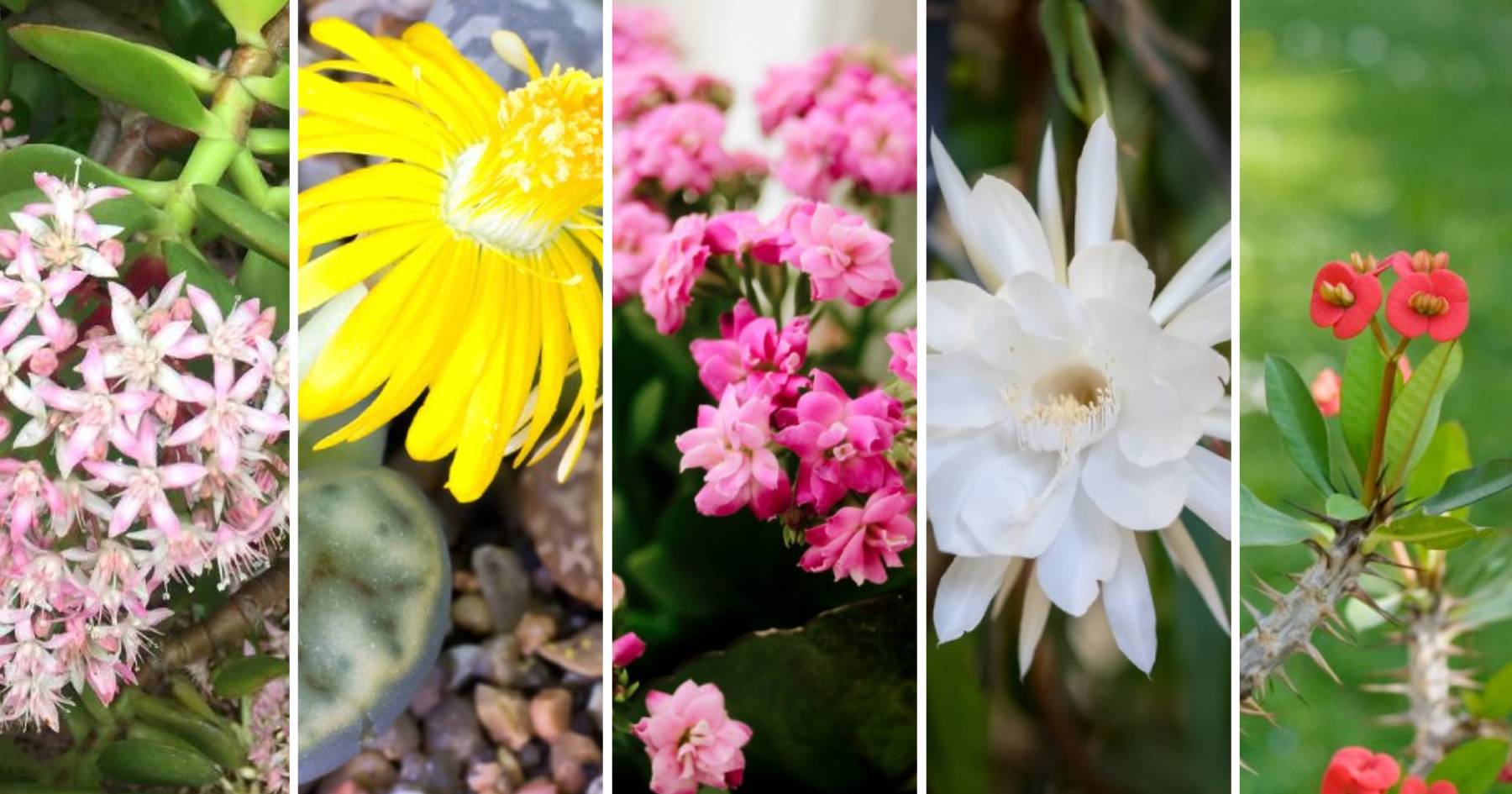Succulents are beloved as houseplants not only because of their interesting foliage but also for their flowers – although it is usually small or less interesting than the leaves.
You’ll also need patience as many succulents do not flower until they reach maturity. Some may even need to be coaxed to flower under the right environmental conditions.
Nevertheless, flowering succulents are a great addition to your indoor garden and a wonderful seasonal perk.
Here are our favorite popular flowering succulents.
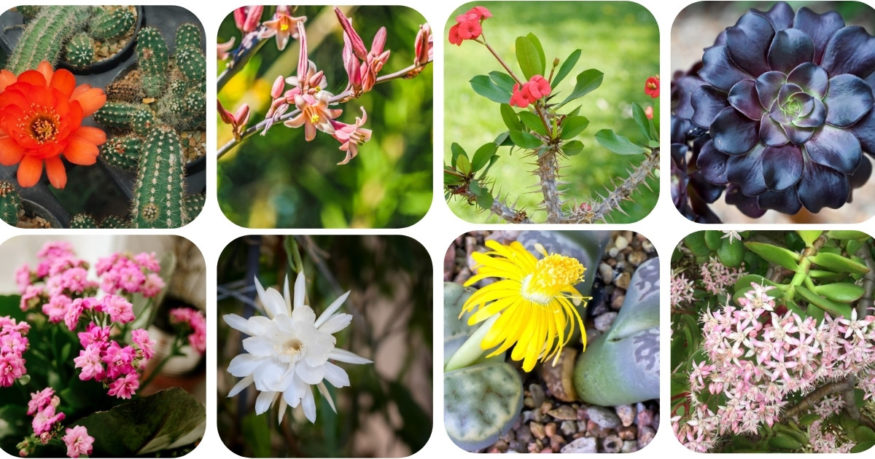
20 Types of Succulents With Flowers
Century Plant

Botanical Name: Agave americana
Also Known As: American agave, Maguey, Mexican soap plant
The century plant is well known for its bloom. Yes “bloom,” singular. This large, stunning succulent got its common name “century plant” because it is monocarpic, meaning it only blooms once in its lifetime.
Technically that lifetime is more likely to be 10-25 years, not 100, but who’s counting? Even without annual flowers, this handsome and drought-tolerant plant is perfectly suited to hot, dry landscapes, and if you’re patient you may get to see its one and only flower spike, which can reach as tall as thirty feet.
Holiday Cactus (Christmas Cactus)
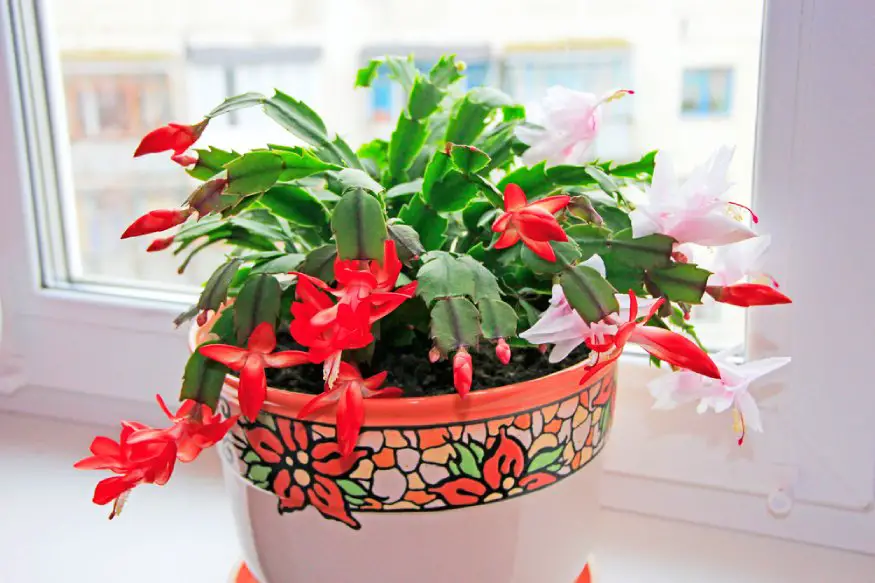
Botanical Name: Thanksgiving cactus (Schlumbergera truncata)
Also Known As: Christmas cactus (Schlumbergera bridgesii), Easter cactus (Schlumbergera gaertneri)
Holiday cacti are odd plants from the rainforest not the desert. They are also one of the few succulents that are typically kept more for their flowers than their leaves.
The prolific flowers come in many shades, including fuchsia, red, apricot, white, and rose. Although it is nicknamed for the time of year when they’re most likely to bloom, you can expect it to bloom for months.
What triggers flowering in these beautiful houseplants is the onset of winter. You can recreate that environment for an indoor potted plant by:
- Locating the plant somewhere it will have cool temperatures (around 55 degrees Fahrenheit at night, 60-65 during the day)
- Long overnight periods of darkness (around 12 hours).
Once this plant buds it becomes finicky. Be careful not to move it or subject it to drafts or substantial temperature shifts as much as possible to protect the blossoms.
Living Stones
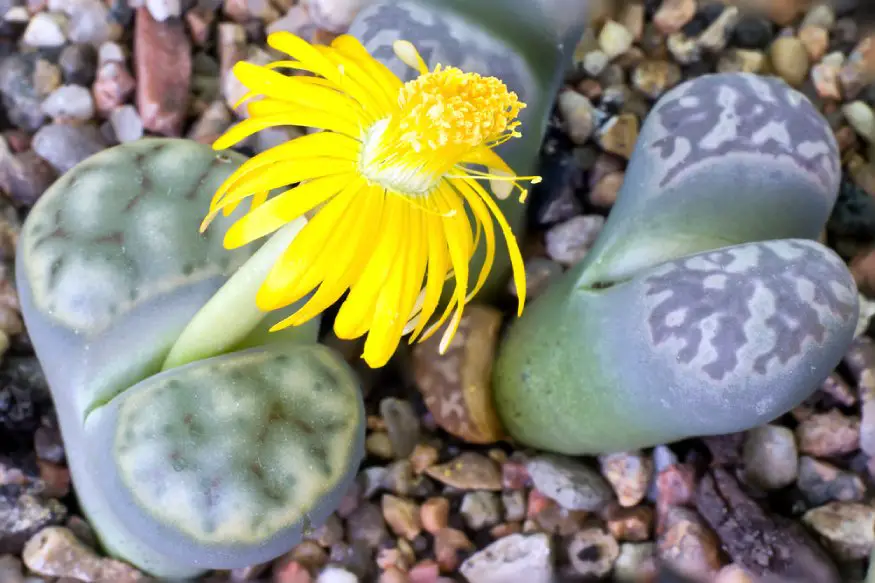
Botanical Name: Lithops
Also Known As: Pebble plants, Stone face, Cattle hoof
Living stones are cute as buttons, shaped like smooth little nubbins, but they also flower in the fall or early winter. They are a part of the fig/marigold family, but the flower looks a lot like a dandelion that may or may not be scented. It also opens and closes throughout each afternoon.
After flowering, the plant forms its new body so that over the winter the old one can dry out into a papery jacket.
For more information on Lithops, check out our guide to growing living stones.
String of Pearls
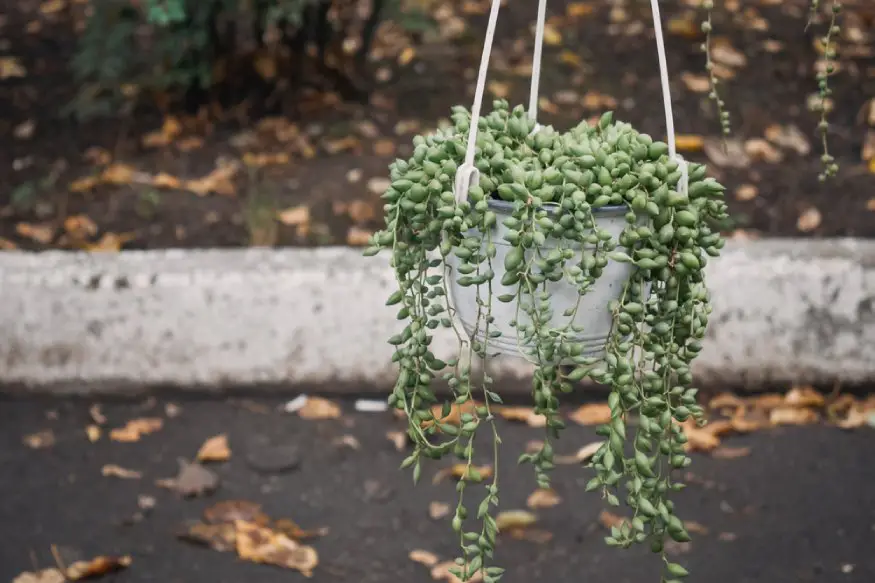
Botanical Name: Curio rowleyanus
Also Known As: String of beads, String of peas
Curio rowleyanus is well loved for the showy trailing foliage that earned it the nickname string of peas, but this succulent also produces unusual flowers.
The flowers are white and pom-pom shaped, with colorful stamens and anthers. They smell like cinnamon. In order to encourage flowering, keep the plant in cool dry conditions over the winter. Unfortunately, it is poisonous and thus not the best choice if you have kids and pets.
For more information about String of Pearls, check out our guide to growing Curio rowleyanus.
Black Rose Aeonium

Botanical Name: Aeonium aboreum Zwartkop
Also Known As: Black beauty, Black Aeonium
If you’re a fan of succulents and flowers, but your vibe is more goth than cutesy, you might particularly appreciate the black rose aeonium. Technically, this is not a flowering succulent, it is a winter-growing/summer-dormant (like any good goth) succulent with large black rosettes on long stems.
In other words, it’s a cluster of leaves that looks like a flower, but it’s creepy-cool enough that it doesn’t make much difference what a scientist would call it. Each rosette can only bloom once, then it dies, but the plants are formed in a cluster and not all flower at once, so your zombie-looking plant will live on.
Pink Jade

Botanical Name: Crassula ovata ‘Pink Beauty’
Also Known As: n/a
Jade is one of the most popular following succulents. This is because it can produce clusters of lovely star-shaped flowers reminiscent of jasmine when it matures. Pink beauty is a particular stand-out among jades.
The leaves are primarily green but develop attractive rosy edges. The flowers grow in clusters at the end of stems, so that the plant in full bloom can resemble a pretty pink firework exploding. It grows three to five feet and works well as an outdoor plant in a suitable growing zone, but also grows well in pots.
Florist Kalanchoe

Botanical Name: Kalanchoe blossfeldiana
Also Known As: n/a
Kalanchoe is almost certainly the most popular flowering succulent not only because it is widely available in most supermarket’s floral section, but it is also is one of the best succulents to grow if you want flowers.
Unlike most succulents, which are largely grown for their greenery and produce only sparse and occasional flowers, kalanchoes have a compact green base topped by larger clusters of four-petaled flowers. Numerous variations exist, so you can find kalanchoe in fuchsia, red, orange, yellow, pink, and white.
Since they are so inexpensive and widely available, some people treat kalanchoe like annuals, buying them for a season of blooms and then tossing them out. However, they can be encouraged to rebloom by ensuring they experience the long dark nights they would in the wild.
Long nights (14-16 hours) at moderate temperatures should do the trick. Keep in mind that kalanchoe are toxic to many animals, particularly dogs.
Orchid Cactus

Botanical Name: Epiphyllum oxypetalum
Also Known As: Climbing cactus, Dutchman’s pipe cactus, Queen of the Night
Orchid cactus is a bit of a misnomer. These plants aren’t desert creatures, but epiphytic tropical succulents (they consume most of their moisture and nutrients from the humid jungle air, rather than from the soil via their roots). They also have unusually long, trailing leaves.
There are many varieties and hybrids, so their flowers can be red, orange, yellow, pink, purple, or white. Epiphyllum oxypetalum specifically has aerial roots and abundant large, fragrant, white flowers. The flowers open at night, peaking around midnight, earning this succulent one of its nicknames, queen of the night.
Crown of Thorns
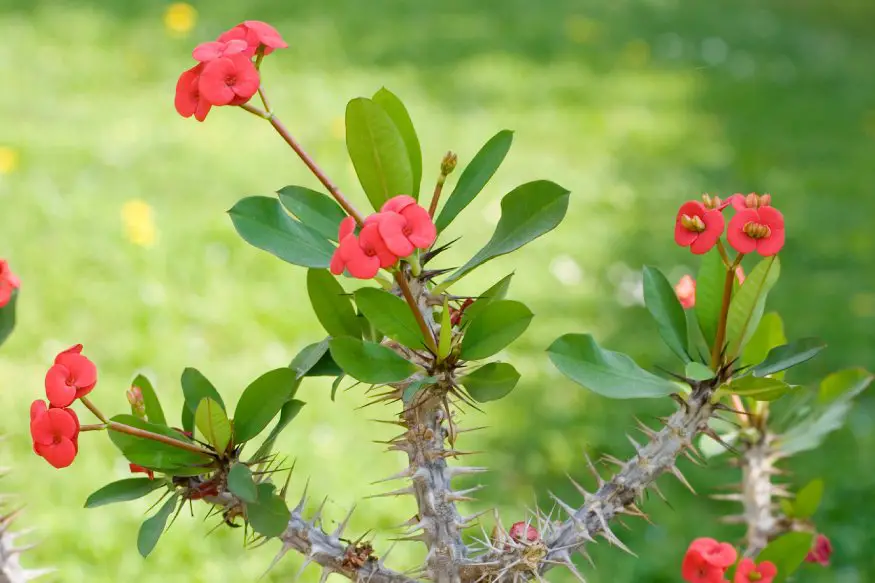
Botanical Name: Euphorbia milii
Also Known As: Christ plant, Christ thorn
Euphorbia milii is an eye-catching evergreen succulent shrub in the spurge family. Crown of thorns has a stem and branches lined with sharp spikes (the source of the religious myths surrounding it).
The flowers look a bit like hydrangea flowers and are typically red, but some hybrids are pink or even white or yellow. While Euphorbia milii specifically grows to a few feet, there are many hybrids, including dwarf and large varieties.
It is very drought tolerant and easy to grow in appropriate growing zones. However, it is poisonous to people and animals besides being dangerously spiky.
Thimble Cactus
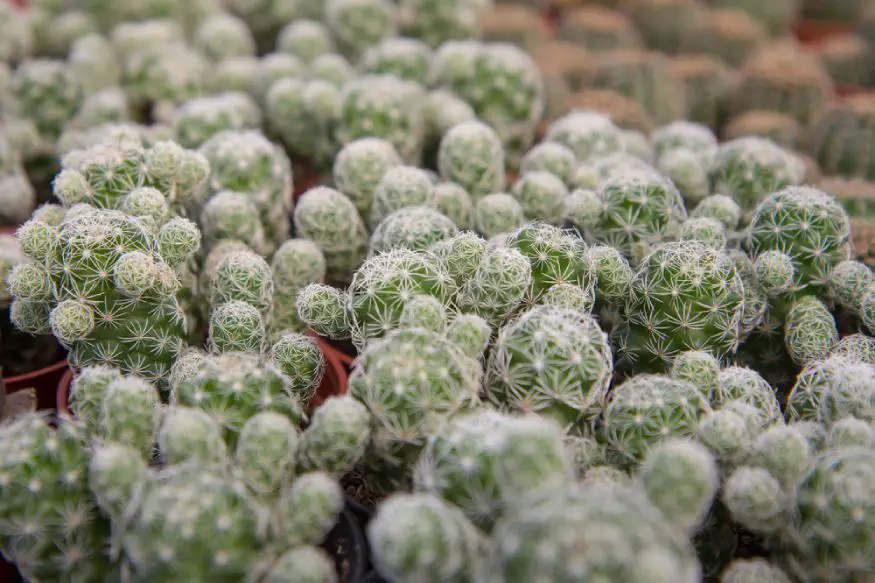
Botanical Name: Mammillaria vetula
Also Known As: Pincushion cactus
Pincushion cactus is a very common houseplant, with hundreds of species and hybrids. One species, the thimble cactus, maxes out at about six inches, but grows in clusters to cover a lot of ground, and ultimately delivers a lot more visual appeal than you might expect for such a little succulent.
They work well in pots, clustered with other taller succulents. Thimble cactuses have radial spines and white wool. The flowers are typically a creamy yellow shade, but some cultivars have bright fuchsia pink flowers.
In order to get this cactus to flower, it is important to provide plenty of bright sunlight and warmth throughout the spring and summer, and then cooler temperatures in the winter.
Peanut Cactus
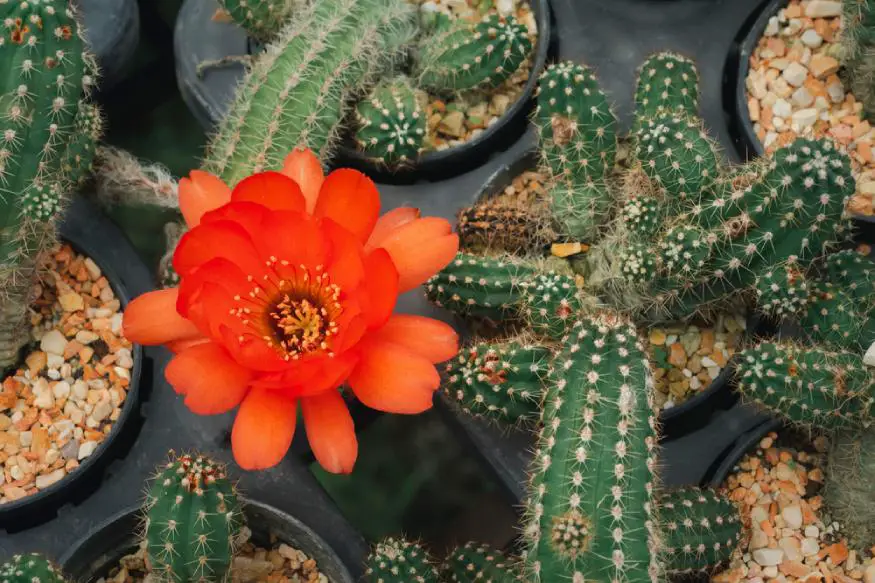
Botanical Name: Echinopsis chamaecereus
Also Known As: n/a
This cute low-growing cactus forms a dense bunch of finger-like stems that bear a definite resemblance to pickles, although their growth pattern apparently resembles (to some people) a bowl of in-shell peanuts.
The stems grow upward but also have a trailing habit, so it can be grown in hanging planters quite nicely. The stems have soft white bristles.
In the late spring to early summer, the peanut cactus may produce a large batch or two of showy vermilion flowers. The flowers are large (relative to the cactus), up to a couple of inches in diameter.
It likes full sun in summer, but cooler temperatures and long nights in the winter. However, unlike some succulents that are much more likely to bloom if grown outdoors, an indoor-only peanut cactus is well inclined to produce a great flower display as long as its sunlight and temperature needs are met.
Red Yucca
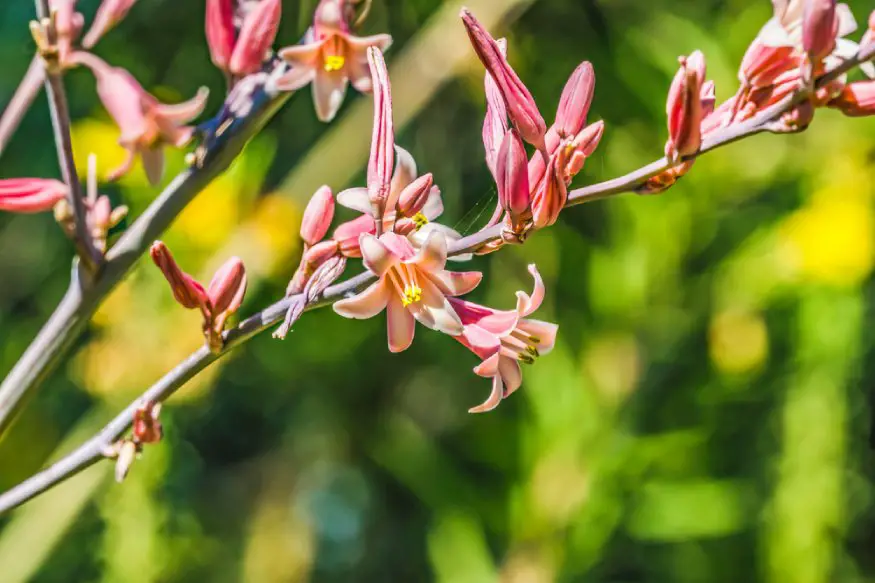
Botanical Name: Hesperaloe parviflora
Also Known As: Hummingbird yucca
This Texas and Mexico native is both a people pleaser and a hummingbird and butterfly pleaser, with a lot of selling points.
In suitable climates, it can bloom repeatedly throughout most of the year. As you might expect of a plant that draws hummingbirds and butterflies, this plant’s five foot tall flower spikes are topped with reddish pink tubular, trumpet-shaped flowers.
In addition to being attractive to pollinators, these are drought tolerant and resist deer and other pests, making them a great landscape plant in hot climates. They are also capable of surviving in dry climates with well-draining soil in areas as cold as USDA growing zone 6.
Hardy Ice Plant
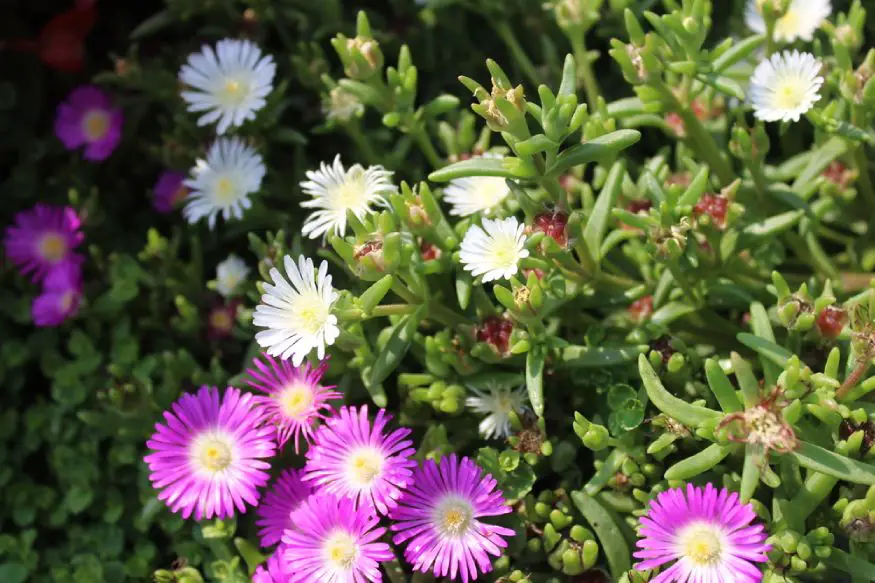
Botanical Name: Delosperma cooperi
Also Known As: Cooper’s Hardy Ice Plant
Ice plant is a beautiful ground-cover succulent that forms a soft bed of fleshy leaves. In the summer, it tops them with a blanket of colorful daisy-like flowers that attract pollinators. It forms a compact ground cover that out-competes most weeds.
The flowers close at night and open during the day. They come in various colors including red, white, yellow, pink, or copper.
Ice plants are accessible for many gardeners, because instead of only being viable in hot climates, some varieties of ice plant can be grown in USDA growing zone 6 to 9, as long as the environment is fairly dry. However, that’s not how this plant got its nickname.
The name ice plant is actually the result of the fact that some non-winter-hardy species have leaves that excrete calcium, which makes the leaves look like they are covered in ice crystals.
Bear Paw

Botanical Name: Cotyledon tomentosa
Also Known As: Kitten paw
This is one of the cutest succulents around. Bear paws have chubby rounded furry leaves with red notches on the ends like little bloody claws. The reddening results from making sure this plant has a lot of sun.
Note: Sufficient direct sunlight is important to keep this plant healthy, redden the leaves, and produce small clusters of yellow or orange flowers.
These aren’t the showiest flowers around, but the combination of flowers and leaves really does have a particular charm. For more information about providing the environmental conditions your bear paw needs to flower, check out our Cotyledon tomentosa growing guide.
Desert Rose
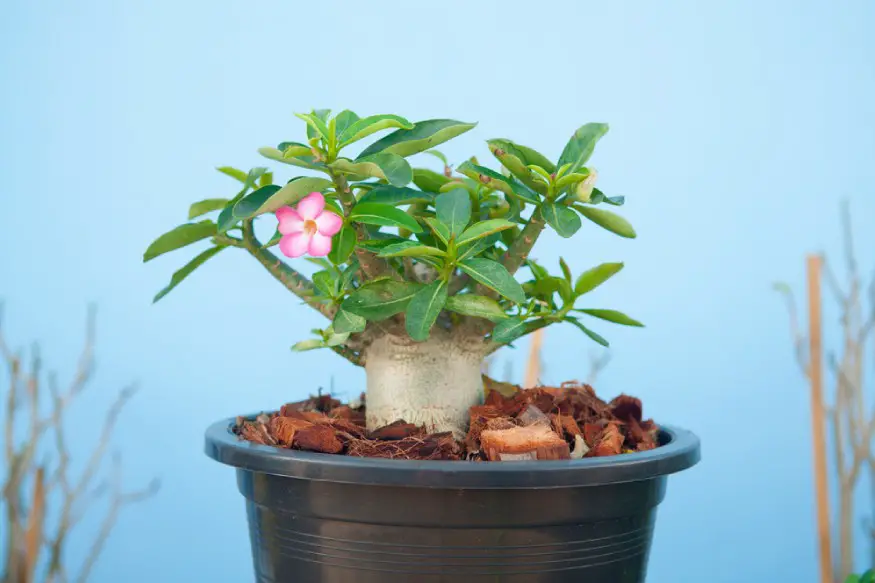
Botanical Name: Adenium obesum
Also Known As: Desert azalea, Mock azalea
This succulent is as pretty as it is poisonous. It grows like a bonsai tree, with succulent leaves on a thick-stemmed shrub. Its remarkably pretty flowers are pink or reddish, sometimes with a white center.
As the name desert rose suggests, these plants prefer a warm to hot, dry climate and, like most succulents, loose, well-draining soil. Grown indoors, it is likely to need a grow light to thrive, as it strongly prefers a lot of sun.
The plant exudes a toxic substance, and all parts of it are toxic, so don’t risk keeping this plant if you have small children or animals.
Lipstick Echeveria
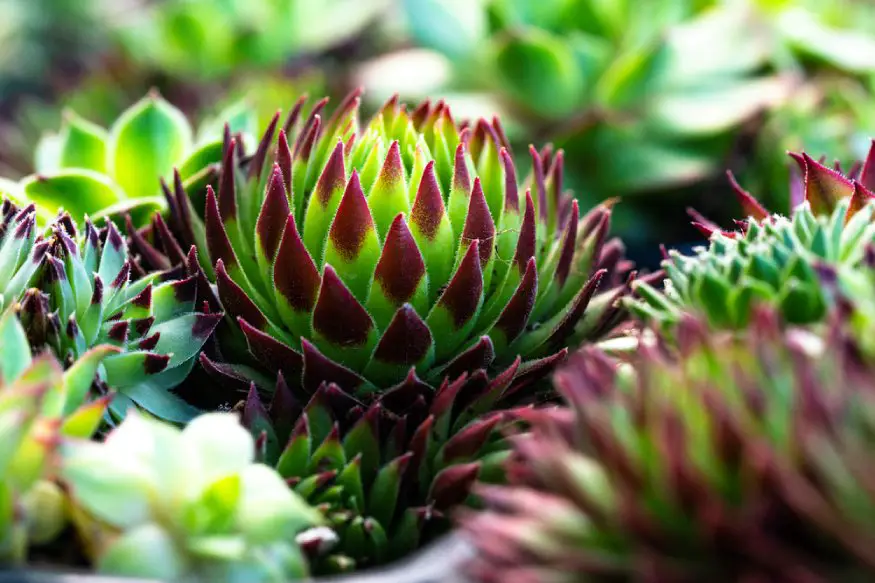
Botanical Name: Echeveria agavoides
Also Known As: Wax agave
This plant’s common name comes from the red tips it develops when given access to sufficient sunlight. Even as an indoor potted houseplant, with enough sunlight in the spring and summer, Echeveria agavoides will bloom in the summer.
The plant produces reddish flower stems with small, attractive bi-color flowers. The flowers are typically pink or orange at the base and yellow at the petal tips.
Fairy Castle Cactus
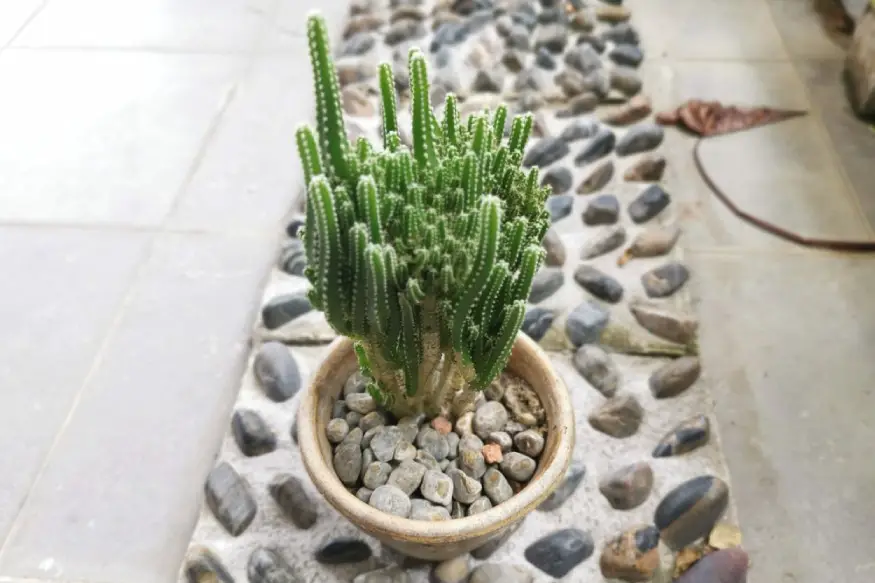
Botanical Name: Acanthocereus tetragonus
Also Known As: Triangle cactus
If you live in growing zones 10-11 and you love a challenge, give the fairy castle cactus a chance.
This cactus only flowers in a healthy and mature state, with a decade or so of growth, grown outdoors in the proper zone. However, the flowering will not be consistent, and the blossoms mainly open at night.
However, if you can wait, this plant is quite cool in flower. The blossoms are white, daisy-like, and quite large for a succulent. However, even if you aren’t in a place where you can grow this cactus outdoors, it makes an adorable houseplant. Just give up on growing your flowers.
Note: Garden stores frequently sell small fairy castle cacti with colorful flowers glued on top. If you like the look of them, that is your prerogative, but don’t be duped, they are not part of your fairy castle cactus.
Starfish Plant
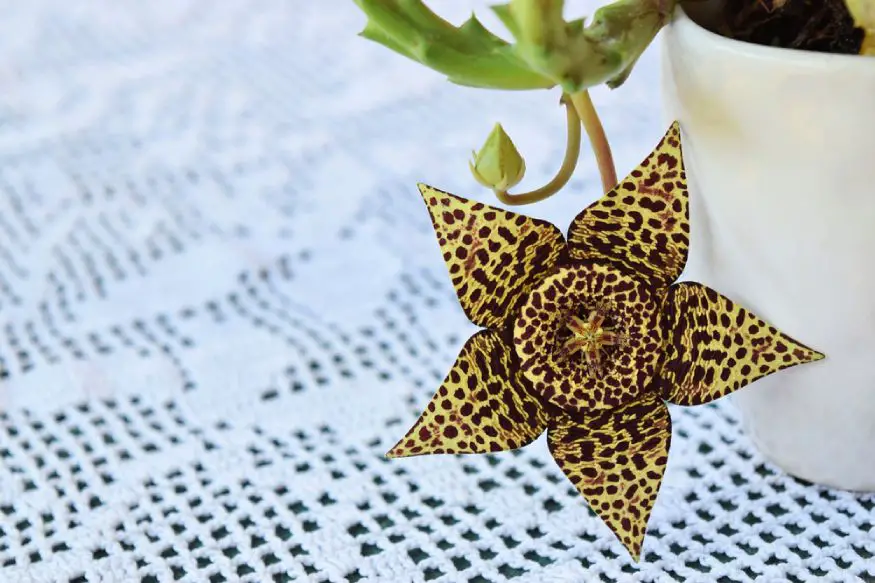
Botanical Name: Orbea variegata
Also Known As: Star plant, Star flower, Carrion cactus, Carrion flower
You might think this suggestion stinks, but hear us out. True, the flowers of the unkindly nicknamed carrion cactus smell like rotting meat and attract less appealing pollinators (flies rather than bees and butterflies). However, the flowers are also remarkably beautiful, like a starfish and an orchid made a baby. The Starfish plant is a leafless succulent, and the flowers bloom in summer.
This plant is related to dogbane, and can be invasive in some environments, so practice good plant hygiene and keep the little stinker contained. It is also happy growing in a west-facing window. You can always blame the smell on the dog.
Variegated String of Hearts
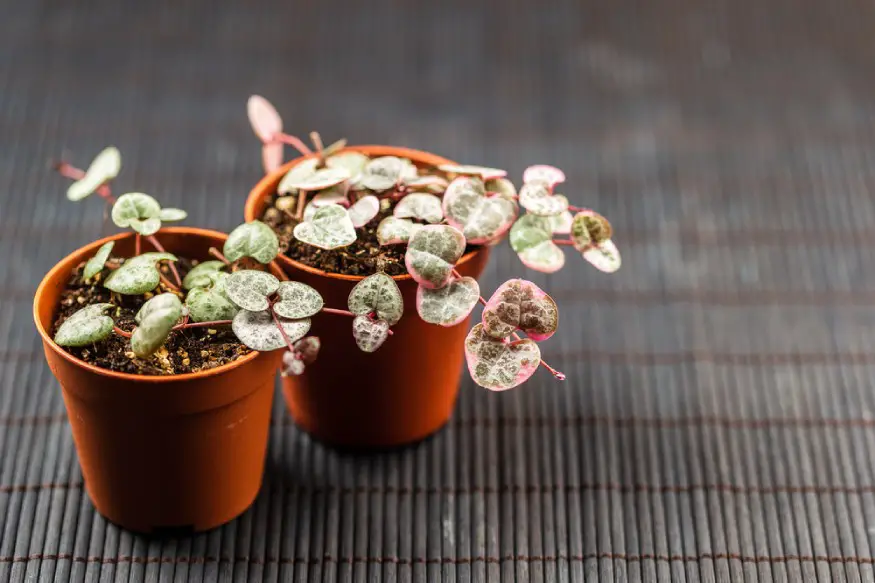
Botanical Name: Ceropegia woodii variegata
Also Known As: rosary vine, chain of hearts, hearts-on-a-string, wine-glass vine, bushman’s pipevine
String of hearts may not seem like a succulent, because its leaves are so thin and dainty, but it’s the kind of plant that makes people fall in love with succulents.
The plant itself is gorgeous, with long trailing vines bearing gorgeous pink, silver, and green mottled heart-shaped leaves, along with tiny tubers that resemble garbanzo beans. It seems like gilding the lily for variegated string of hearts to have unique flowers that look like flamingos, with bulbous pink/purple bodies, long arching necks, and hairy lobes reminiscent of a beak.
If you want yet another selling point, hang your variegated string of hearts outdoors in the summer. It may attract hummingbirds.
Zebra Haworthia
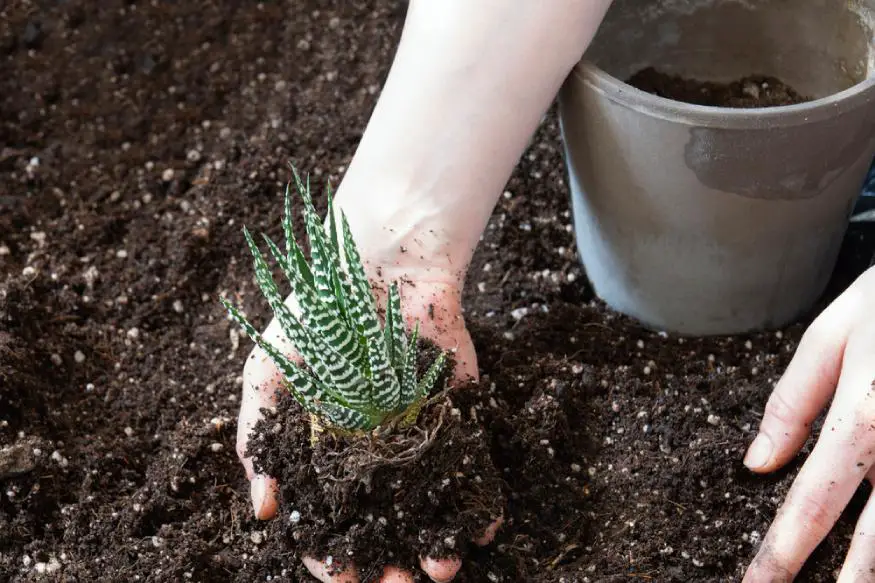
Botanical Name: Haworthiopsis fasciata, Haworthiopsis attenuata
Also Known As: Zebra plant
Zebra plants are arresting, with spiky aloe-like leaves in white and bold green striped patterns. Though small, typically under eight inches, they have a lot of visual impact. That means they are typically grown solely for their foliage. However, they do, in fact flower, if they go through a proper winter dormancy.
If given the correct conditions, in the summer, they may send up an unexpectedly tall flower spike with a cluster of small white flowers. There are two types of haworthias, and one (Haworthiopsis attenuata) is frequently mislabeled by plant centers (labeled as the rarer variety, Haworthiopsis fasciata).
Have It Both Ways With Blossoming Succulents
Many people bring home succulents for the easy-to-care-for and often eye-catching foliage, and they are surprised to discover one day that their greenery has sprouted a flower stem. Others specifically seek out some of succulents specifically for their flowers. If you’re in this second group, this list of amazing

